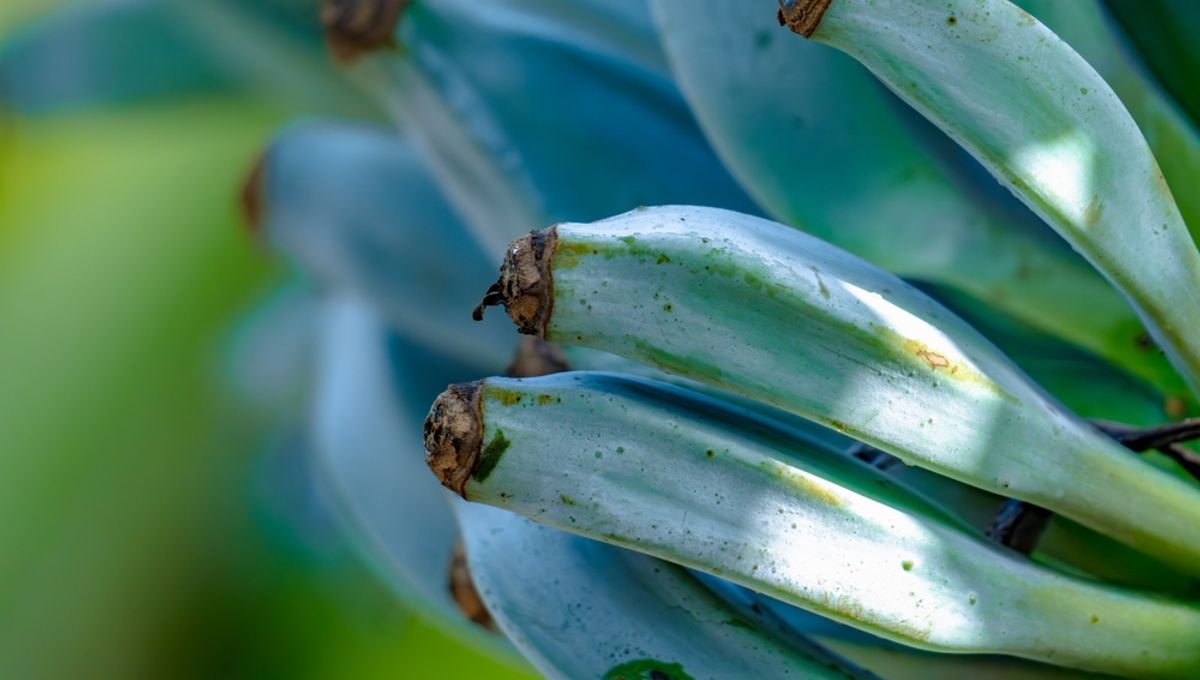
Have you heard of the Blue Java banana? If social media is to be believed, the fruit is bright blue and tastes like vanilla ice cream.
Perhaps not-so-shockingly, these claims are not entirely accurate. But they are not entirely without basis either. Indeed, in its unripened state, the banana peel possesses a “blue-green” hue–before turning yellow upon ripening. And while it has been compared to ice cream, this is usually in reference to its creamy texture and not because it actually tastes like vanilla ice cream. Sorry to break it to you.
According to the book Traditional Trees of Pacific Islands, this variety of banana goes by many names, including “Ney Mannan” banana in India, “Java Blue”, “Vata”, and “Pata” in Fiji, and, perhaps most excitingly, “ice cream banana” in Hawai’i and Florida.
The reason it possesses an unusual hue (during its unripe state) is thanks to a heavy coating of wax that surrounds its peel. The fruit itself is a white-ish shade and, as for its taste, Weird Explorer has reviewed the fruit on his YouTube channel, describing it as having a berry flavor.
“I’m not especially getting vanilla at all but the texture on it is so soft and creamy that it has the texture of ice cream. It’s like dense and creamy at the same time,” he said. “If you want something to taste like banana but so much better than the one that we get at supermarkets, this is definitely one to try out.”
Edelle Schlegel, a farmer who sells Blue Java, told USA Today the fruit is “sweet and slightly tart like apple bananas, (and) the texture is ultra creamy.”
Blue Java is one of more than 1,000 varieties of banana that exist. Despite this huge level of diversity, the Cavendish variety makes up almost 100 percent of global banana exports and are the ones we see in supermarkets across the world today.
While bananas are thought to have originated in the jungles of Southeast Asia, Cavendish bananas were first cultivated in Victorian England and have dominated global trades since the 1950s, after another variety of banana – the Gros Michel – went extinct. According to the Royal Botanic Gardens of Kew, these bananas were larger and sweeter than the ones we know today but were wiped out by Panama disease – and if we are unlucky, the smaller, hardier Cavendish could meet the same fate. Cue bananapocalypse part two.
Indeed, Colombia has already issued a national state of emergency following the discovery of Panama disease on its banana farm. And while hope for the Cavendish is far from lost, it may be that we will have to look to other varieties of bananas in the future. Perhaps the Blue Java will make a compelling candidate.
Source Link: The Truth Behind The Viral Blue Java Banana